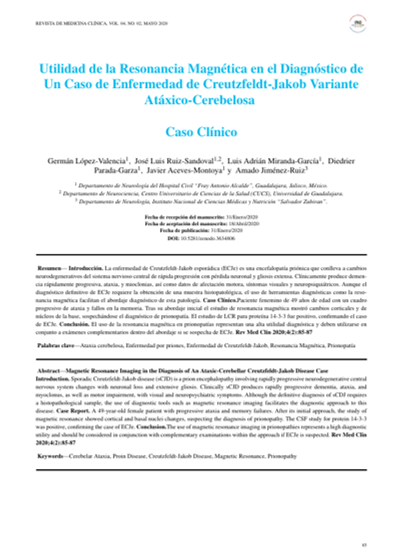Abstract
Introduction: Sporadic Creutzfeldt-Jakob disease (sCJD) is a prion encephalopathy involving rapidly progressive neurodegenerative central nervous system changes with neuronal loss and extensive gliosis. Clinically sCJD produces rapidly progressive dementia, ataxia, and myoclonus, as well as motor impairment, with visual and neuropsychiatric symptoms. Although the definitive diagnosis of sCDJ requires a histopathological sample, the use of diagnostic tools such as magnetic resonance imaging facilitates the diagnostic approach to this disease. Clinical case: A 49-year-old female patient with progressive ataxia and memory failures. After its initial approach, the study of magnetic resonance showed cortical and basal nuclei changes, suspecting the diagnosis of prionopathy. The CSF study for protein 14-3-3 was positive, confirming the case of ECJe. Conclusion: The use of magnetic resonance imaging in prionopathies represents a high diagnostic utility and should be considered in conjunction with complementary examinations within the approach if ECJe is suspected.

This work is licensed under a Creative Commons Attribution-NonCommercial-NoDerivatives 4.0 International License.
Copyright (c) 2020 Clinical Medicine Journal

